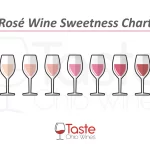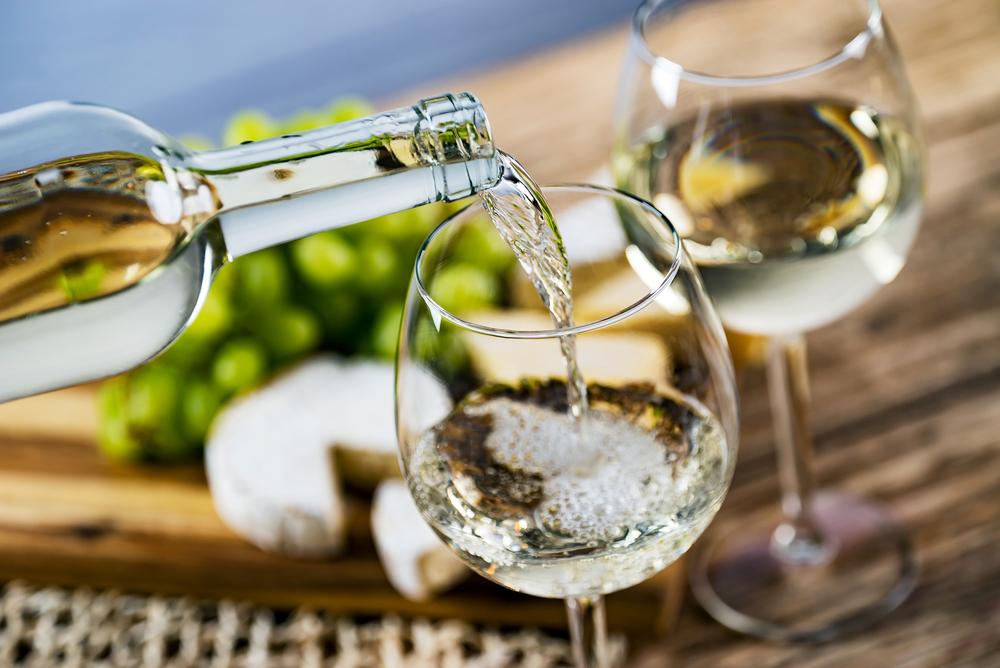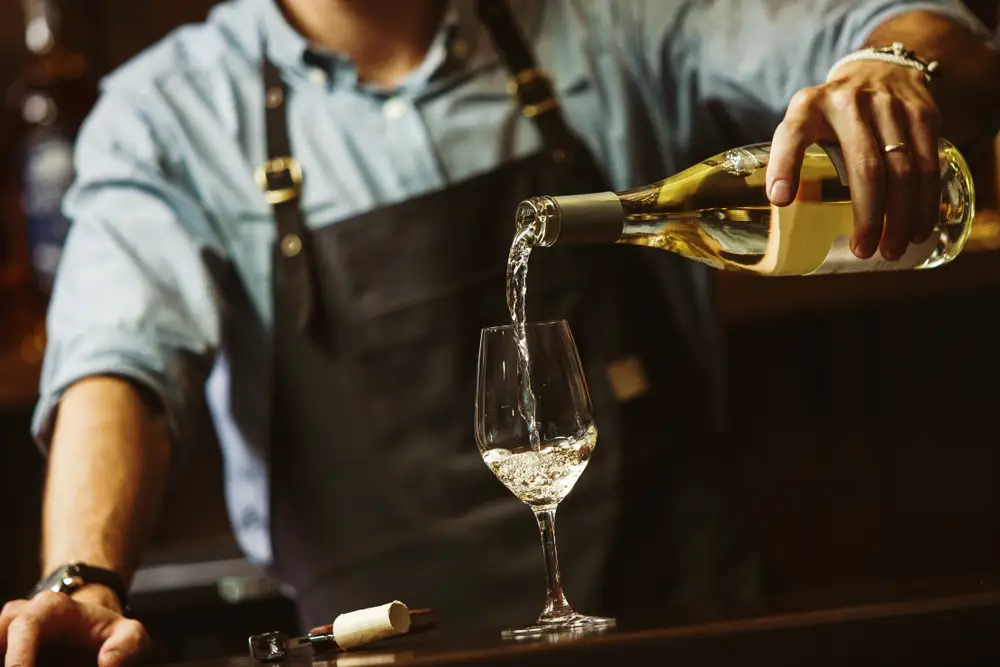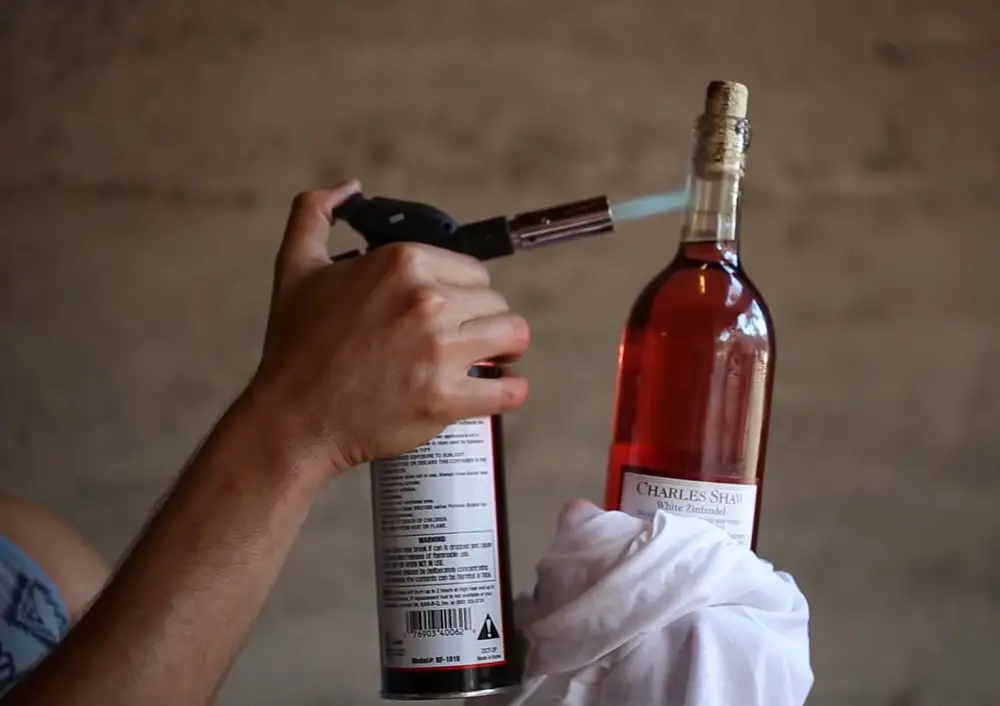Rose wine is known for its blush color and fruity flavors. It has a refreshing taste and is often served chilled which makes it popular in the warm summer months. Rose wine is a perfect blend of the crispness you get from white wine with the depth of flavor found in red wine. Rose wine comes in a range of varieties from very dry to quite sweet.
If you don’t know much about wine, you might believe the common myth that rose wine is a blend of red wine and white wine. In actual fact, rose is its own type of wine, with specific ingredients and production that give it the pink coloring and distinctive taste.
But pink grapes don’t exist, so what exactly is rose? Where is it produced? And what food should you pair it with?
We have answered all of these questions and more in this complete guide to rose. Keep reading to find out more about his popular and refreshing wine.

What Is Rose?
All grapes, no matter their skin color, have clear juice. The color of wine comes from the contact between the juice and the skin of the grape. The longer the skins sit in the juice, the more color the wine will take on.
This process is called maceration. Rose wine is made from red grapes, but the juices and skins are given less time to sit together which results in a paler, blush color as opposed to the deep colors of red wine.
After maceration, the grape skins are removed and the grape juices are left to ferment. The fermentation process is when the naturally occurring sugars in the grape juice turn into alcohol.
Rose is often made from a blend of different grapes, most commonly syrah, cinsault, mourvedre, tibouren, carignan, and cabernet sauvignon. You can get some rose wines that are made exclusively from one grape.
California produces some rose that is made solely from pinot noir grapes.
Common Wine Terms
As you learn about rose wine, you will come across some common phrases used to describe wine.
Rose can be described as ‘dry’ or ‘sweet’. This refers to how much residual sugar is left in the wine after the fermentation is complete. Wine with less than 1% residual sugar is considered dry.
As a general rule, dry rose wines pair well with chicken, fish, vegetables, and salads. Sweet rose wines pair better with meat, rich sauces and barbeque flavors. However, it does depend on the individual wine. We will look into this further later on.
You will also hear rose being categorized as light bodied, medium bodied, or full bodied. This describes how it feels in your mouth. The higher the alcohol content, the heavier the liquid feels in your mouth as alcohol makes it thicker and more viscous.
People also tend to comment on the tannins in the wine. Tannins come from plant materials like leaves and from the oak barrels that some wines are aged in. Tannins give the wine a bitter taste.
Where Is Rose Wine Produced?
Rose is produced in many vineyards across the world, but most notably in the Provence region of France. Provencal rose is known for being dry and delicate with an orangey-pink blush.
It is a versatile wine that can be paired with many different kinds of food, making it a popular choice with rose drinkers.
Rose produced in European countries, like France, Italy and Spain, are called old world wines. Rose made in places outside of Europe, like Australia, California, or Argentina are called new world. Old world rose wines tend to be dry, whereas new world rose is sweeter.
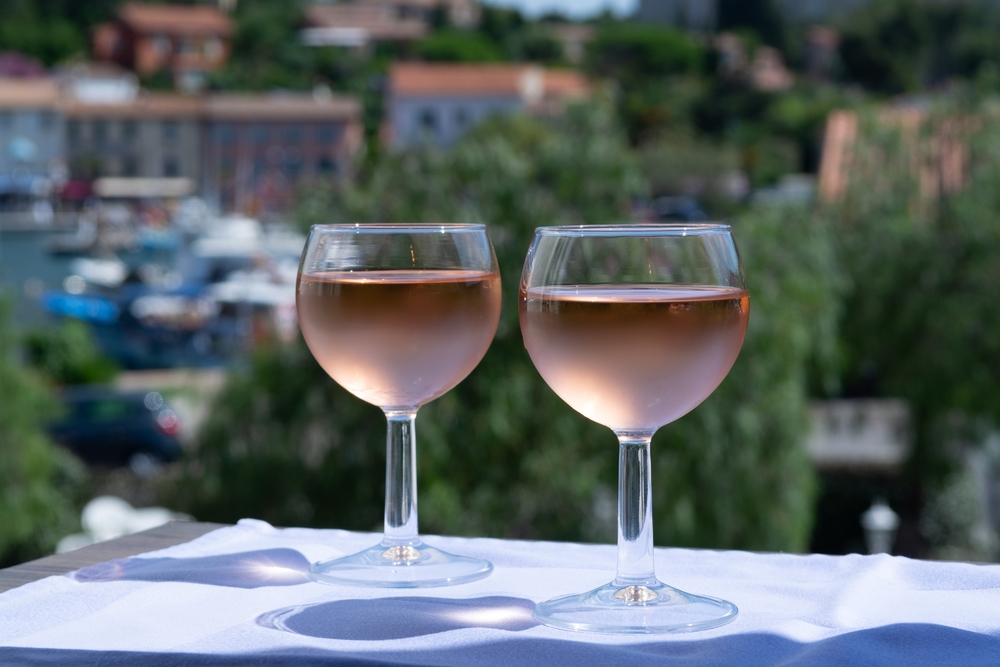
What Does Rose Taste Like?
As rose is made from red grapes, it shares some flavor notes with red wine, but it is crisper and more refreshing.
The exact taste will depend on the type of rose you are drinking as each wine is unique, but some common flavors are red fruits, flowers, citrus fruits, melon and celery.
Types Of Rose Wine
Now that you know a bit more about rose wine, here is some information on the most popular varieties and their best food pairings.
White Zinfandel is one of the most well known varieties of new world rose, produced mainly in California. It is a sweet wine, light to medium bodied and fairly acidic. The main flavor notes are citrus, strawberry and melon, giving it a very fruity taste.
White zinfandel makes an excellent accompaniment to desserts or a cheese board. The sweet fruity flavors would complement a fresh strawberry cake, and the acidity would cut through a strong fatty cheese.
Pinot Noir is a light bodied dry rose. The flavors are delicate yet crisp, with notes of apple, strawberry and melon. This is an ideal rose wine to pair with summary meals like fresh seafood, salads and zingy pasta dishes. It can also be a good choice to serve alongside cheese.
Mourvedre rose is medium to full bodied with an intense but well rounded flavor. It begins with floral notes, but leaves a lasting taste of rich cherries and smokiness. The intensity of this rose allows it to stand up to strong dishes packed with grilled meat, garlic and rich tomato sauces.
Cabernet Sauvignon rose is full bodied and rich with a much more savory flavor. It tastes more like red wine than other varieties of rose, but is more acidic than red cabernet sauvignon. It has strong notes of blackcurrant and black pepper, and pairs well with grilled meats and curries.
Sangiovese rose wine is dry and fruity, with notes of strawberries, melon and roses. The acidity will pair well with acidic tomato sauces, or will cut through rich ingredients like cream, making this Italian wine a great pairing with Italian cooking.
Tempranillo rose is a Spanish wine, which is fairy dry and savory. It has flavor notes of herbs and green peppercorns, with a bit of watermelon. It accentuates the flavor of many types of meat, particularly fried meat. It also pairs well with salad and mild cheeses.
Tavel rose wine is full bodied, rich and very dry. The robust flavor has notes of fruit, but with a nutty and earthy taste which pairs well with grilled meat and barbeque flavors-perfect for summertime cooking!
Syrah rose is dry and spicy, with flavor notes of olives, cherry and bitter dark chocolate. It is perfect for serving alongside rich, garlicky meals like pizza and pasta.
With so many types of rose wine to choose from, you might be wondering where to start. You could choose your favorite type of food, and pour a glass of the rose that would go best with this.
Alternatively you can browse the shelves of your local grocery store or wine shop and see what stands out to you. Cheap rose is not necessarily bad rose, but some of the low price big brand rose wines do not do justice to the drink.
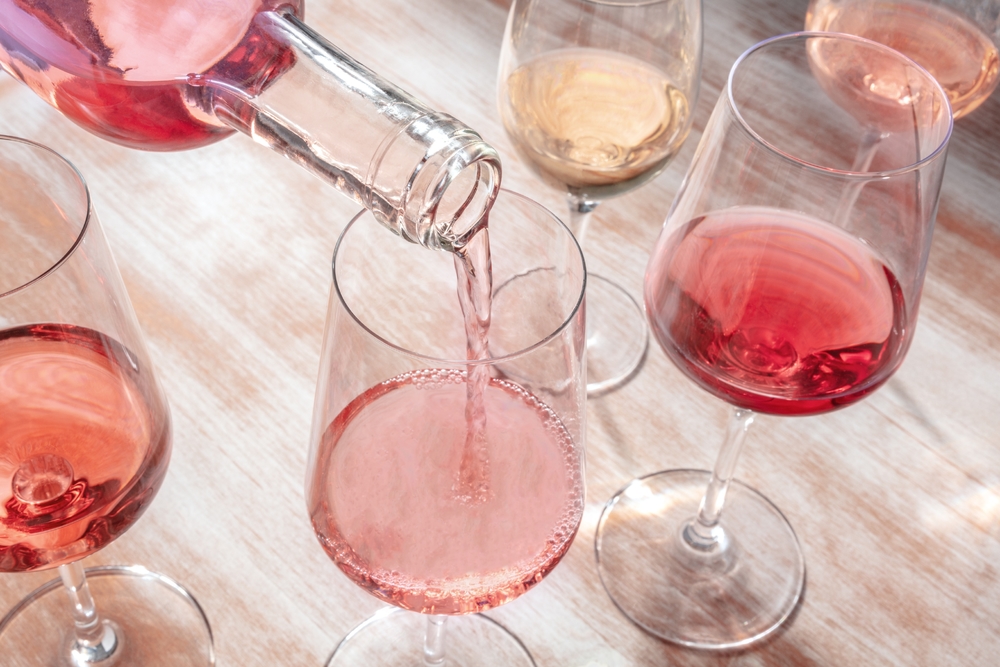
How To Serve Rose Wine
Most Rose wines should be served chilled, but not straight from the refrigerator. Aim for 50 degrees fahrenheit, which is approximately 5 to 10 degrees above refrigerator temperature.
Resist the temptation to serve wine with ice cubes, even if you haven’t managed to chill it enough. As the ice cubes melt they will dilute the flavor of the wine. If you are in a rush, try putting your bottle of rose in the freezer for about 30 minutes.
There are some rose wine varieties that do not need to be served chilled. These are the wines that are closer to red wine in flavor, such as Syrah rose and cabernet sauvignon rose.
In terms of glassware, this can depend on your personal preference. Using the right glass can really enhance the flavor of the wine and improve the overall drinking experience. The narrower the bowl of the glass, the longer the liquid will stay cool for.
This is important for rose wine that is served chilled. A smaller bowl will also preserve floral aromas and deliver more acidity.
The shape of the glass dictates the shape your tongue makes as you sip, which directs the wine to different taste buds, accentuating certain characteristics of the wine.
This can get quite complicated, but the most important thing to remember is to not fill the glass all the way to the top. Leave room at the top of the glass for the aromas of the wine to collect.
Decanting wine is when you pour it from the bottle into another vessel, then let it settle before drinking. This allows the wine to be exposed to oxygen which can enhance the flavors.
It is not necessary to decant rose, but it won’t hurt if you prefer to drink your wine this way. You also don’t need to age rose wine, as it is produced for its bright and fresh flavors.
Summary
As you can see, rose wine is not just a blend of white wine and red wine. It takes qualities of both, but is a different type of wine with it’s own characteristics.
Now that you know more about rose wine, you will be able to start trying some bottles and developing your palate. As you become more experienced, you will be able to branch out with your food pairings depending on what flavor notes stand out to you.
But to start off with, you can use our suggested food pairings to put on an excellent dinner party with a rose wine as the star of the show.
Impress your family and friends by sharing your knowledge about how rose is made, where it is produced and direct them towards the flavor notes and how they compliment the dishes you have prepared. You will soon turn your guests into rose experts too!
- Shrimp Cocktail (and More) Wine Pairing Guide - 09/06/2022
- What Wine Serving Sizes Look Like: Standard Size and More - 08/06/2022
- How Much Sugar is in Wine: Glass and Bottle Sugar Content - 08/06/2022



